At first glance it would be easy to label PUPs that redirect your browser to shady and sometimes even malicious websites as malware simply because of the sneaky way which it installs itself on your computer. Certain adware and potentially unwanted programs add web browser extensions that can track your web usage and redirect you to fake Flash update sites, fake Java update and other websites that offer misleading services and even malicious programs. But the fact is that most such programs don't actually do any damage: they're not password crackers or key loggers which record login details and other information and they won't shut your operating system down or corrupt your files. That means that technically speaking, browser redirects and programs that cause tahem are not considered malware. So what are they?
What is a browser redirect?
First of all, there's a really huge problem that most anti-virus programs do not take browser redirects as a serious threat. Even though, browser redirects are not malicious but they do redirect users to shady websites. Most of them try to trick users into install malware, adware or other potentially unwanted programs. The name Potentially Unwanted Program comes from the way in which the PUP is installed. It's a program because generally speaking it will have a use. For example, it may be a tool bar. But if that’s the case, why is it potentially unwanted? This is the real difference with malware – although your PUP isn't malicious it's still something you haven't made a conscious decision to install. Therefore PUPs lie in somewhat of a grey area: you might wind up finding that tool bar useful. Or you may not. As a matter of fact, some users even get used to browser redirects thinking that they came with the latest web browser updates.
It might amuse you to know that software developers who create adware and PUPs take offense to their programs being called malware and will counteract any such accusation with the argument that their creation is actually useful. The fact that you didn't know you were downloading it in the first place is neither here nor there! Question remains then how should be call a program that installs additional modules on your computer that are responsible for web browser redirects? I don't know about you but I'm pretty certain it's a virus or malware to say the least.
So while there may be some practical features to a PUP, why then may you not want the program? Well, browser redirect aside (and really, weren't you happy with the one you were using anyway?) the problem is that most Potentially Unwanted Programs, adware and malicious browser extensions can be pretty darn annoying.
Potentially Unwanted Programs - the dark side
Okay, so you'd rather have browser redirects on your computer than a Trojan Horse, but you'd really be better off without either! Even if you get used to redirects or new home page it will only be a matter of time before you start noticing it's not all it seems.
The issue is that PUPs and browser hijackers have been developed to create a source of income for the developer and as such they will change your browser settings and your home page to one that the developer wants you to see. Not only this but typing a search query into the search box or a URL into the browser will redirect you, not to the website you want to visit, but again, to one that the developer wants you to go to.
Removing browser redirect
PUPs and adware are usually simple to get rid of through the Windows Control Panel but because they're not classed as malware many anti-viruses don't spot them. My advice? Install a reputable anti-malware program and run a full system scan. Then reset your browser settings and clean %Temp% folders. If you don't know how to do that properly, please follow the steps in the removal guide below. If you have any questions, please leave a comment down below. Good luck and be safe online!
Written by Michael Kaur, http://deletemalware.blogspot.com
Browser Redirect Virus Removal Guide:
1. First of all, download anti-malware software and run a full system scan. It will detect and remove this infection from your computer. You may then follow the manual removal instructions below to remove the leftover traces of this malware. Hopefully you won't have to do that.
2. Remove browser redirect related programs from your computer using the Add/Remove Programs control panel (Windows XP) or Uninstall a program control panel (Windows 7 and Windows 8).
Go to the Start Menu. Select Control Panel → Add/Remove Programs.
If you are using Windows Vista or Windows 7, select Control Panel → Uninstall a Program.

If you are using Windows 8, simply drag your mouse pointer to the right edge of the screen, select Search from the list and search for "control panel".

Or you can right-click on a bottom left hot corner (formerly known as the Start button) and select Control panel from there.
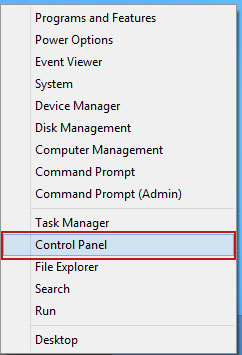
3. When the Add/Remove Programs or the Uninstall a Program screen is displayed, scroll through the list of currently installed programs and remove the following:
- Quiknowledge
- LyricsSay-1
- Websteroids
- BlocckkTheAds
- HD-Plus 3.5
- and any other recently installed application
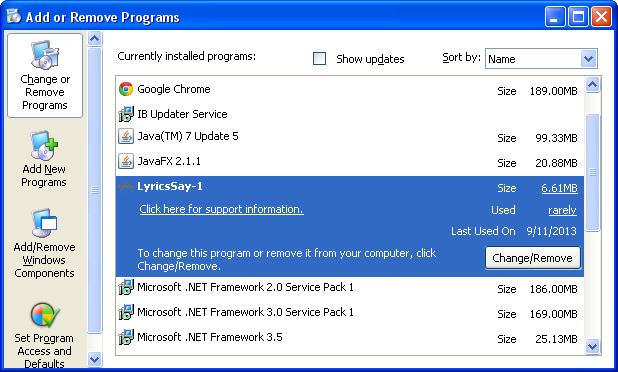
Simply select each application and click Remove. If you are using Windows Vista, Windows 7 or Windows 8, click Uninstall up near the top of that window. When you're done, please close the Control Panel screen.
Remove browser redirect related extensions from Google Chrome:
1. Click on Chrome menu button. Go to Tools → Extensions.
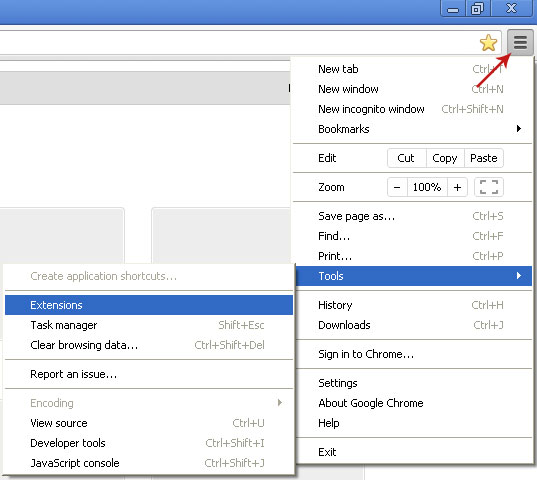
2. Click on the trashcan icon to remove BlocckkTheAds, LyricsSay-1, Websteroids, Quiknowledge, HD-Plus 3.5 and other extensions that you do not recognize.
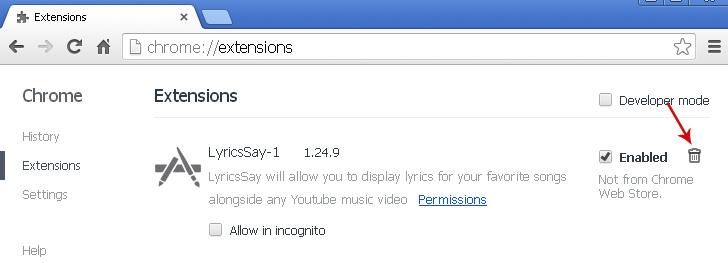
If the removal option is grayed out then read how to remove extensions installed by enterprise policy.

Remove browser redirect related extensions from Mozilla Firefox:
1. Open Mozilla Firefox. Go to Tools → Add-ons.

2. Select Extensions. Click Remove button to remove BlocckkTheAds, LyricsSay-1, Websteroids, Quiknowledge, HD-Plus 3.5 and other extensions that you do not recognize.
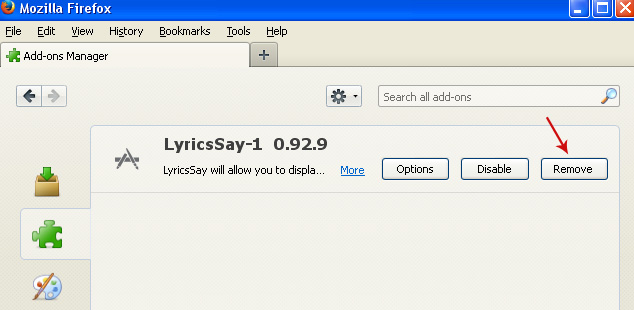
Remove browser redirect related add-ons from Internet Explorer:
1. Open Internet Explorer. Go to Tools → Manage Add-ons. If you have the latest version, simply click on the Settings button.

2. Select Toolbars and Extensions. Click Remove/Disable button to remove the browser add-ons listed above.


Không có nhận xét nào:
Đăng nhận xét